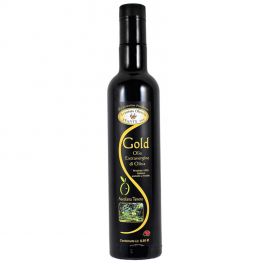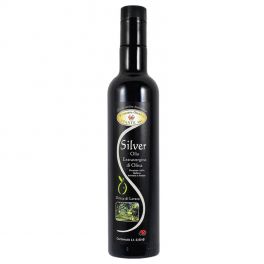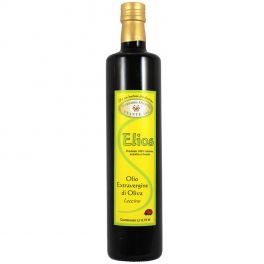Abruzzo Olive Oil - Oleificio Stante
The Best Abruzzo Olive Oil - Oleificio Stante
Abruzzo is an Italian region that produces a big amount of extra virgin olive oil. The olive oil culture has been handed down for more than 400 years. Today in Abruzzo more than 41000 hectares are planted in olive groves, the plants are more than 9 million and produce about 200,000 tons of oil, that's why Abruzzo is the fifth Italian olive oil producer. Most common cultivars are Leccino, Dritta di Loreto, Gentile di Chieti and the Toccolana. The hints of Abruzzo olive oil are: artichoke notes, almond and fresh grass and balanced spiciness sensations.
The brothers Graziano and Vincenzo founded the Frantoio Oleario Stante in 2002 between the Abruzzo and Molise regions. Their aim was to produce high quality extra virgin olive oil, striving for an organic olive oil made with only one cultivar. The oil mill has modern and up to date machines which allow to work the olives without being invasive. The olive trees are spread between Abruzzo and Molise, on the hills of Trigno river's valley. Olives are picked and pressed within the very first hours after the harvest in order to avoid the oxidation of the polyphenols. The extra virgin olive range is wide; they offer organic olive oil from a single olive variety, olive oil from integrated farming, olive oil made with unpitted olives and also flavoured extra virgin olive oils. Believing that it is one of the best olive oils from central Italy, Foodexplore is proud to offer the Organic monocultivar extra virgin olive oil by the Oleificio Stante to you. The production of the olive oil begins when the olives are brought to the mill. The leaves are removed with an automatic defoliator. The olives are then washed and pressed. The pressing is the first phase of the real extraction, when the olives are crushed. Oleificio Stante carries out the pressing with two different machines; one with vertical disks which will deliver an olive oil with stronger and more intense flavours, and another machine for a softer pressing of the olives, which have been unpitted first. The result of the pressing is an olive paste. Then malaxing takes place, a process where the bigger oil molecules are condensed, at a temperature below 27°C in order to preserve the aromas and the quality of the olive oil. Finally the olive oil is cold-pressed by centrifugation still at a temperature below 27°C.
The brothers Graziano and Vincenzo founded the Frantoio Oleario Stante in 2002 between the Abruzzo and Molise regions. Their aim was to produce high quality extra virgin olive oil, striving for an organic olive oil made with only one cultivar. The oil mill has modern and up to date machines which allow to work the olives without being invasive. The olive trees are spread between Abruzzo and Molise, on the hills of Trigno river's valley. Olives are picked and pressed within the very first hours after the harvest in order to avoid the oxidation of the polyphenols. The extra virgin olive range is wide; they offer organic olive oil from a single olive variety, olive oil from integrated farming, olive oil made with unpitted olives and also flavoured extra virgin olive oils. Believing that it is one of the best olive oils from central Italy, Foodexplore is proud to offer the Organic monocultivar extra virgin olive oil by the Oleificio Stante to you. The production of the olive oil begins when the olives are brought to the mill. The leaves are removed with an automatic defoliator. The olives are then washed and pressed. The pressing is the first phase of the real extraction, when the olives are crushed. Oleificio Stante carries out the pressing with two different machines; one with vertical disks which will deliver an olive oil with stronger and more intense flavours, and another machine for a softer pressing of the olives, which have been unpitted first. The result of the pressing is an olive paste. Then malaxing takes place, a process where the bigger oil molecules are condensed, at a temperature below 27°C in order to preserve the aromas and the quality of the olive oil. Finally the olive oil is cold-pressed by centrifugation still at a temperature below 27°C.

Filters


 Italiano (IT)
Italiano (IT)  Deutsch (DE)
Deutsch (DE)  Français (FR)
Français (FR)  Español (ES)
Español (ES)  Polish (PL)
Polish (PL) 




This website is protected by reCAPTCHA and the Privacy Policy & Terms and Conditions of Google